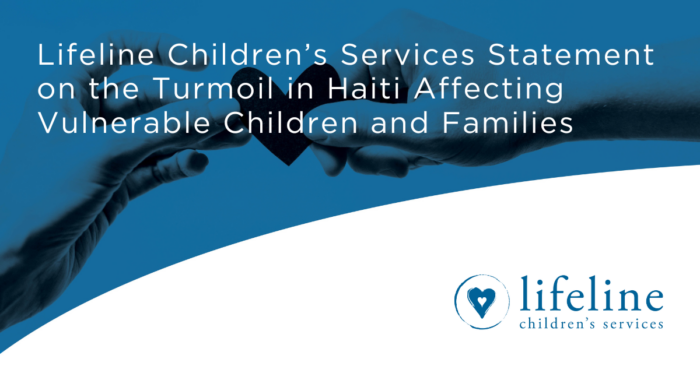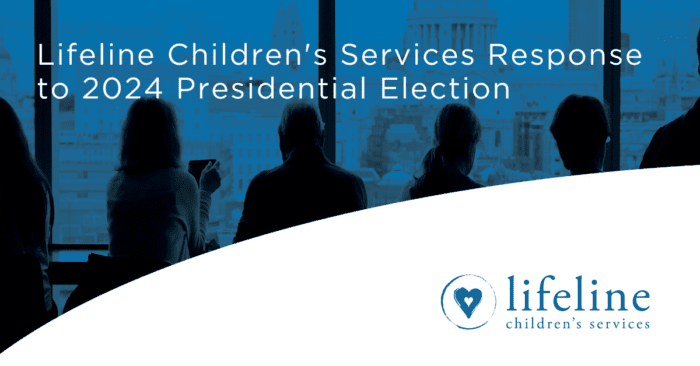Self-soothing behaviors in children and adolescents from hard places can be confusing and the range of parental responses to such behaviors can be vast. Some families look at this behavior and may think it is developmentally appropriate while others may think something is “wrong” with their child. Our desire is that this information will help you understand what these behaviors are, why they occur, and provide practical suggestions for how to respond to a child if you are seeing self-soothing behaviors.
WHAT IS SELF-SOOTHING? Self-soothing is simply when a child regulates their emotional state by themselves rather than having these needs met by a parent or caregiver. Generally, self-soothing behaviors are repetitive behaviors which were learned during a period of time when the child was under-stimulated and needed to create his or her own way of occupying his/her time, or self-soothing was used to meet the child’s emotional needs at the time. A consistent state of abandonment, deprivation, and neglect of basic emotional needs often “educates” children on how to “take care” of their own emotional needs with self-soothing and self-stimulating behavior.
Examples of Self-Soothing include:
¨ Withdrawal
¨ Aloofness
¨ Finger sucking
¨ Clothes sucking
¨ Hair twisting
¨ Full-body spinning
¨ Rocking
¨ Head spinning
¨ Head banging
¨ Staring at hands
¨ Covering ears to block out ordinary sounds
¨ Extreme restlessness
¨ Masturbation
¨ Obsessive touching of self and objects
¨ Unusual reaction to some sensory stimuli (taste, smell, touch)
¨ Making unusual, animal-like sounds.
WHY CHILDREN SELF-SOOTHE:
¨ Unsure how to deal with emotions: When a child’s emotional range is limited, self-soothing can be calming.
¨ Unmet neurochemical needs: Self-soothing stimulates the body’s neurochemicals (Endorphins and Serotonin), thus raising their mood.
¨ Attachment: A lack of consistent relationships and care in a child’s life (especially during the first three years) dramatically affects how a child interprets and interacts with the world around them. Infants and young children fail to learn self-regulation without loving and supportive caregivers. Children with inconsistent care early in life learn that they must rely on themselves for care.
¨ Difficulties surrounding gestation, birth, and health: Risk factors such as difficult birth, difficult pregnancy and early hospitalization increases the likelihood that a child will have difficulty self-regulating and coping with trauma or stress. The more risk factors the higher the possibility of a child’s need for self-soothing
¨ Stress: Stress is a natural part of living, but too much stress is damaging, especially to the developing brain. The stress response (fight, flight, or freeze) is the automatic reaction that is useful when coping with short term challenges. However, when the stress response is activated continually, as in abuse, neglect and compromised attachment, it can damage the brains, bodies, and behavior of children. One of the most alarming results of chronic stress in children is their inability to control their emotions and behavior leading to aggressive and impulsive reactions (self-soothing, self-harm, suicide, etc.).
¨ Trauma: Children who have not been helped to deal with issues from their past may be prone to physical manifestations of a need to feel in control or for a release from deep emotional pain. Self-soothing behaviors, understood as unhealthy coping skills, serve as a form of self-medication in order to calm themselves down or to rev themselves up and to attempt to make themselves feel better.
How to Respond to Self Soothing:
Provide a child with as much physical touch and affection as the child can tolerate. Children newly home may need time to feel comfortable with these activities so you may have to introduce touch slowly. (refer to Connecting Points #3 on Touch) Self-soothing behaviors will likely dissipate over the first several months as the child gains trust and security within the family relationships. As a parent provides reassurance, unconditional love, and emotional and physical presence for their child, the need to self-soothe will decrease. It is through creating dependence between you and your child that you will foster independence and self-regulation in the future.
Practical Reminders and Suggestions…..
¨ Approach the child with an understanding that is not blame-based or negative
¨ Offer to help the child when they are feeling overwhelmed or under-stimulated: Help your child be aware of their body and how they are feeling. A tool like an engine plate can help them identify if they are running too hot or too cold. Parents can have regular “check-ins” with their child until they develop this awareness on their own.
¨ Utilize a sensory-schedule: Talk with your OT about setting up a schedule for your child. Every two hours engage your child in sensory exercise or play, eat a snack and drink plenty of fluids, and have a quiet rest period.
¨ Increase the amount of affection and nurture that you are providing the child to help facilitate trust , felt safety, and (eventually) secure attachment: Just like a newborn baby and his mother, the child will learn self-regulation through co-regulation provided by a parent.
¨ Be present physically and emotionally with your child to help them build his/her regulatory system
¨ Make modifications to the child’s environment: Provide an environment that is calming, predictable, and consistent.
¨ Try to meet the child’s need, so they don’t have to: We often see self-soothing behaviors around bed time and nighttime as these are times in the orphanage where many children didn’t receive adequate care or stimulation and can be a time of high anxiety. If a parent is seeing self-soothing behaviors around bedtime, step in and be their outside regulator. Parents can do this by rocking their child, snuggling, bottle feeding, swaddling, rubbing their back or even massaging their feet. These activities provide soothing input and encourage the child or adolescent to trust their caregivers and foster attachment.
¨ It’s okay to ignore self-soothing behaviors when a child is early home and not harming themselves (i.e. thumb sucking, sucking on blankets, etc.): Children who are newly home may need time to adjust and a parent providing regulation may be overwhelming or overstimulating at times.
¨ Make transitions slow and easy: Give the child time to adjust to transitions and use tools like picture schedules, timers and verbal reminders to help the child transition successfully.
¨ Help the child identify their feelings: Children’s stories, puppets, feelings charts, and role playing are all tools you can utilize to help children learn and identify feelings.
¨ Help the child verbalize their feelings : For example, a parent may observe their child pulling his hair. The parent might say, “Oh, you look like you might be feeling angry right now. What do you need?”
¨ Make an appointment for neurochemical testing to evaluate neurochemical levels and address any unmet needs.
¨ Some self-soothing behaviors will harm a child: In these instances, parents need to intervene more actively and prevent injury. For example, a parent may cover the rails of a bed if they see their child engaging in head-banging. If a child is hitting or punching themselves, we encourage the parent to redirect the hits or punches to a soft object like a pillow or gently restrain the child so they do not hurt themselves further. Be prepared to provide the child another outlet to meet this need until they can learn how to regulate in healthier ways. This may mean picking up the child and rocking them until they are calm, providing them an “angry object” to hit, encouraging them in a physical activity that can relieve stress and tension (pushing the wall, chewing gum, squeezing a stress ball, etc.), or even using a weighted blanket or other sensory tool to provide healthy touch and pressure which can be calming and relieving.
CONCLUSION: Parents need to understand why their child may feel the desire or need to self- soothe and attempt to address the underlying need behind this action. They also need to help their child find new ways of regulating. Remember that this is a gradual process. Self-soothing behaviors will likely decrease over time if parents are preventative, focus on building attachment and trust, and provide their child with an environment to succeed.
Developed by: Megan Davis, MS, LBSW References: Cohen, M. Adoption and Suicide Risk. Retrieved from http://www.attachmentandtraumaspecialists.com/articles/adoption_and_suicide_risk. Forbes, H.T. (2008). Beyond Consequences, Logic, and Control: A Love Based Approach to Helping Children with Severe Behaviors. Boulder, CO: Beyond Consequences Institute. Forbes, H.T. (2009). Dare to Love: The Art of Merging Science and Love into Parenting Children with Difficult Behaviors. Boulder, CO: Beyond Consequences Institute. Gindis, B. (2012, April). Post-Orphanage Behavior in Internationally Adopted Children. Retrieved from http://www.bgcenter.com/BGPublications/OrphanageBehavior.htm.Macrae, S. MacLeod, J. & Pertman, A. (2006). Adoption Parenting: Creating a Toolbox, Building Connections. Warren, NJ: EMK Press. Mayo Clinic Staff. (2015, December 9). Self-injury/Cutting. Retrieved from http://www.mayoclinic.org/diseases-conditions/self-injury/home/ovc-20165425.Orlans, M. & Levy, T. (2006). Healing Parents: Helping Wounded Children Learn to Trust & Love. Washington DC: Child Welfare League of America, Inc.Post Adoption Information: Frequently Asked Questions. Retrieved from http://www.postadoptinfo.org/faqs/Riben, Mirah. (2015, September 14). Toward Preventing Adoption-Related Suicide. Retrieved from http://www.huffingtonpost.com/mirah-riben/toward-preventing-adoptio_b_8127882.htmlRostler, Suzanne. (2001). Suicide Attempts More Common Among Adopted Teens. Retrieved from https://www.adoptionhealing.com/Suicide.htm.




